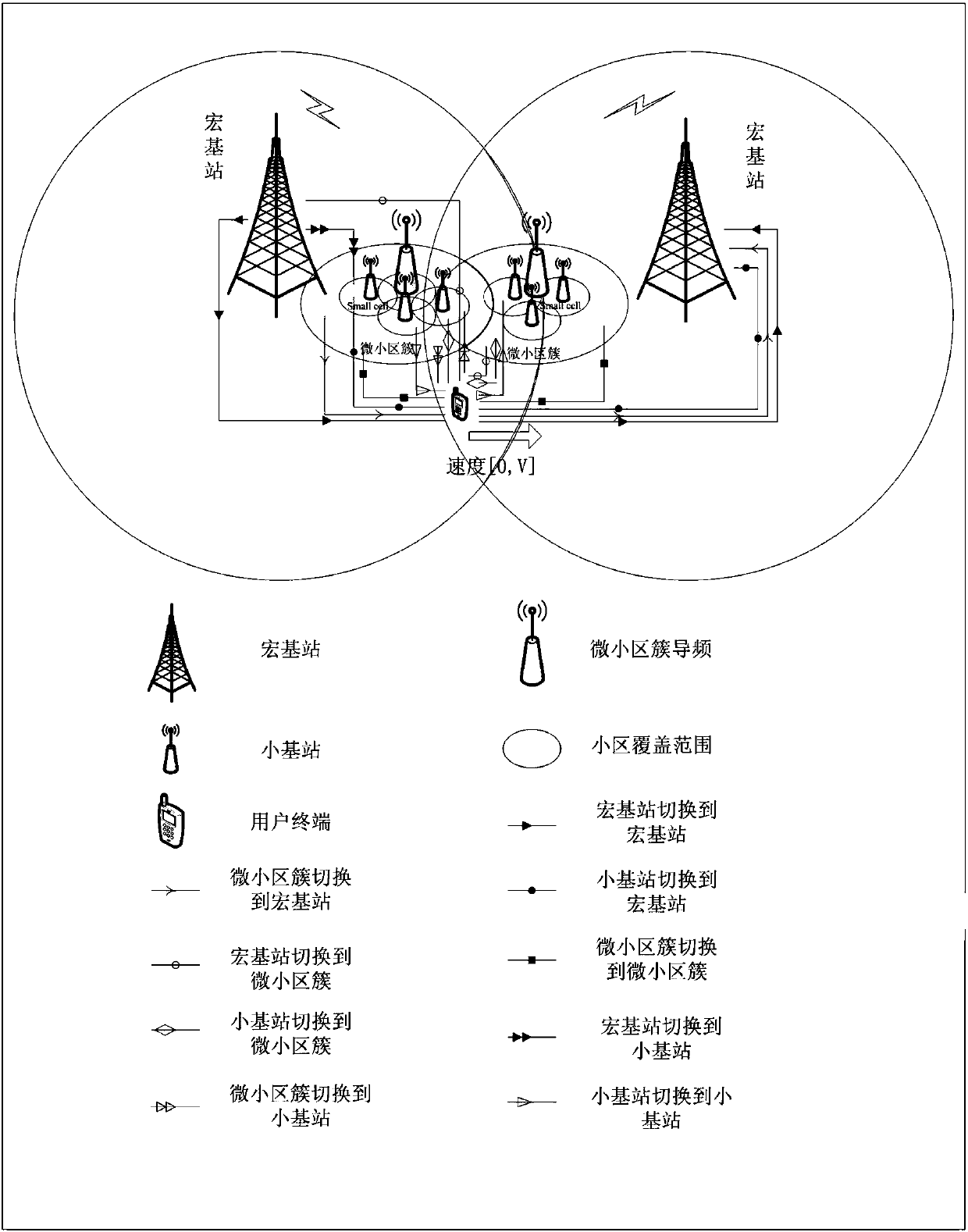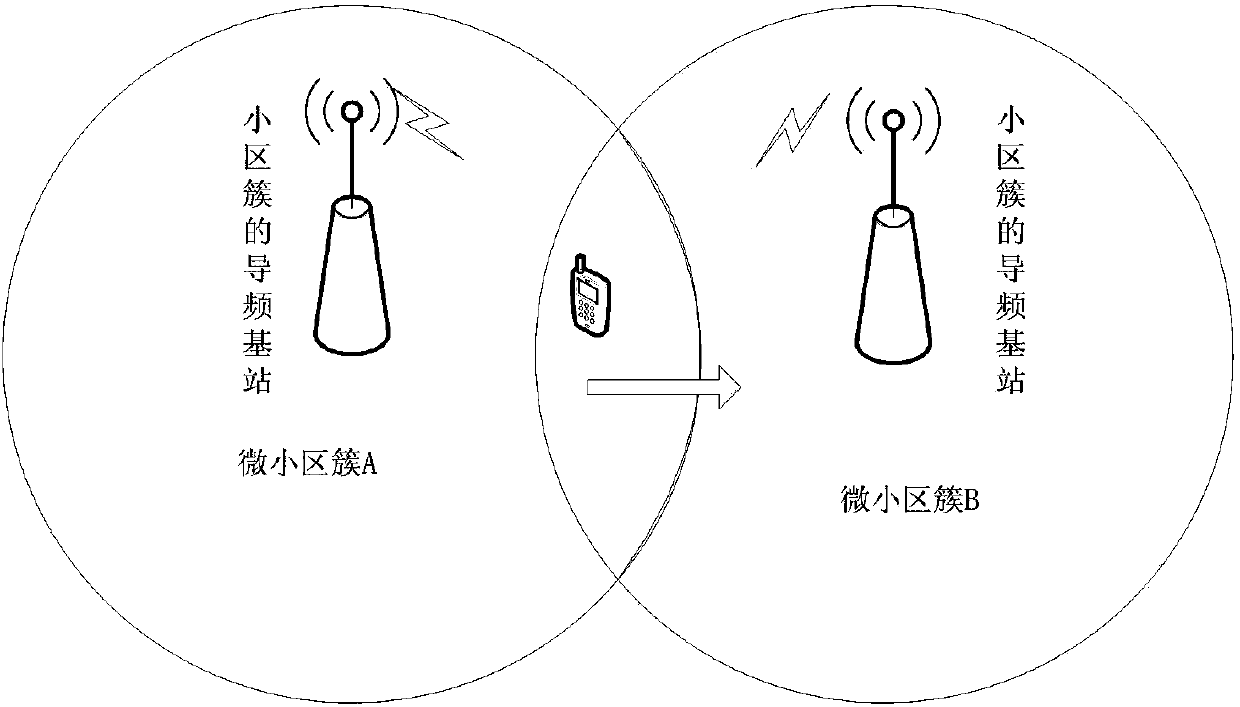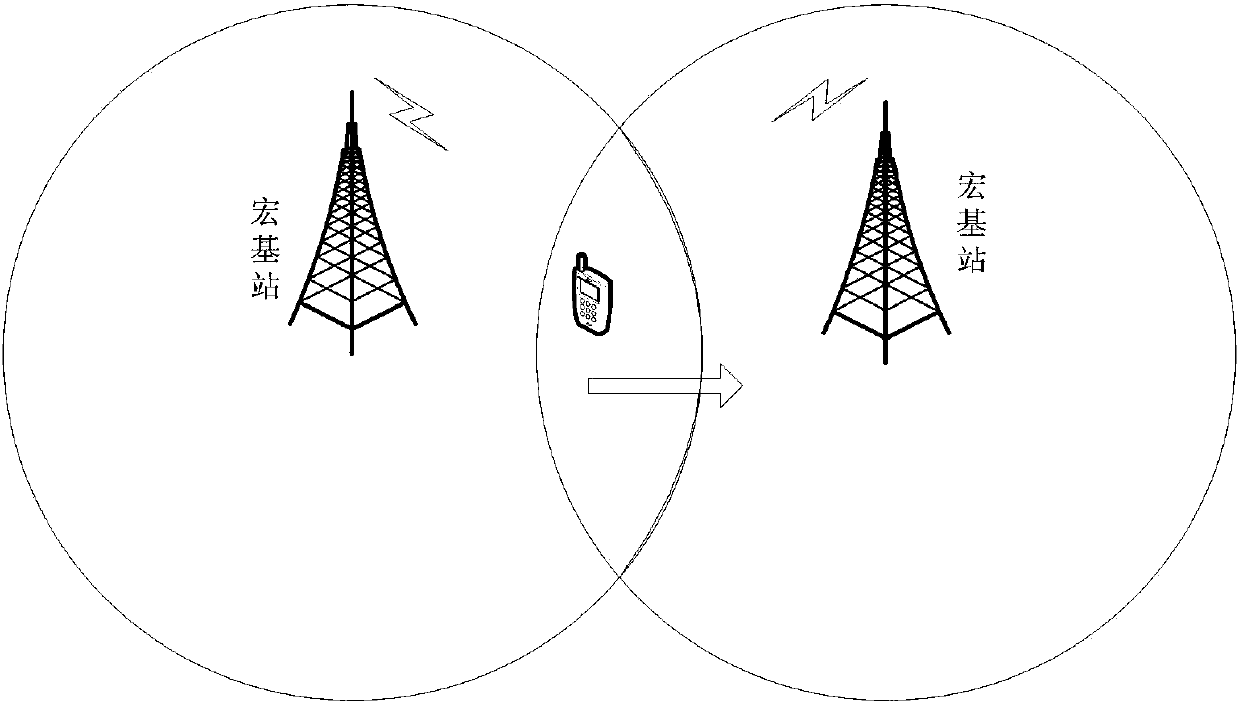A clustering-based mobility management method for ultra-dense small networks in 5G systems
A management method and ultra-intensive technology, applied in electrical components, wireless communication, etc., can solve the problems of increased mobile complexity of user equipment, achieve the effects of reducing call drop rate, improving handover success rate, and reducing call blocking rate
- Summary
- Abstract
- Description
- Claims
- Application Information
AI Technical Summary
Problems solved by technology
Method used
Image
Examples
Embodiment Construction
[0085] Examples of the present invention will be described in detail below.
[0086] The present invention provides a mobility management method based on clustered ultra-dense small networks in the 5G system, such as Figure 9 As shown, the mobile terminal periodically monitors the signal quality of cell base stations, including macro base stations and small base stations, to implement periodic monitoring and update location information. If the signal quality of cell base stations (including macro base stations or small base stations) meets the handover conditions, the mobile terminal will prepare for handover. If the signal quality of the cell base station does not meet the handover condition, the mobile terminal will continue to monitor the signal of the cell base station. Under the premise of ensuring the optimal network signal, the network resources of the cell are used to the maximum extent.
[0087] The working principle of the birth-death process model is that the arr...
PUM
 Login to View More
Login to View More Abstract
Description
Claims
Application Information
 Login to View More
Login to View More - R&D
- Intellectual Property
- Life Sciences
- Materials
- Tech Scout
- Unparalleled Data Quality
- Higher Quality Content
- 60% Fewer Hallucinations
Browse by: Latest US Patents, China's latest patents, Technical Efficacy Thesaurus, Application Domain, Technology Topic, Popular Technical Reports.
© 2025 PatSnap. All rights reserved.Legal|Privacy policy|Modern Slavery Act Transparency Statement|Sitemap|About US| Contact US: help@patsnap.com



